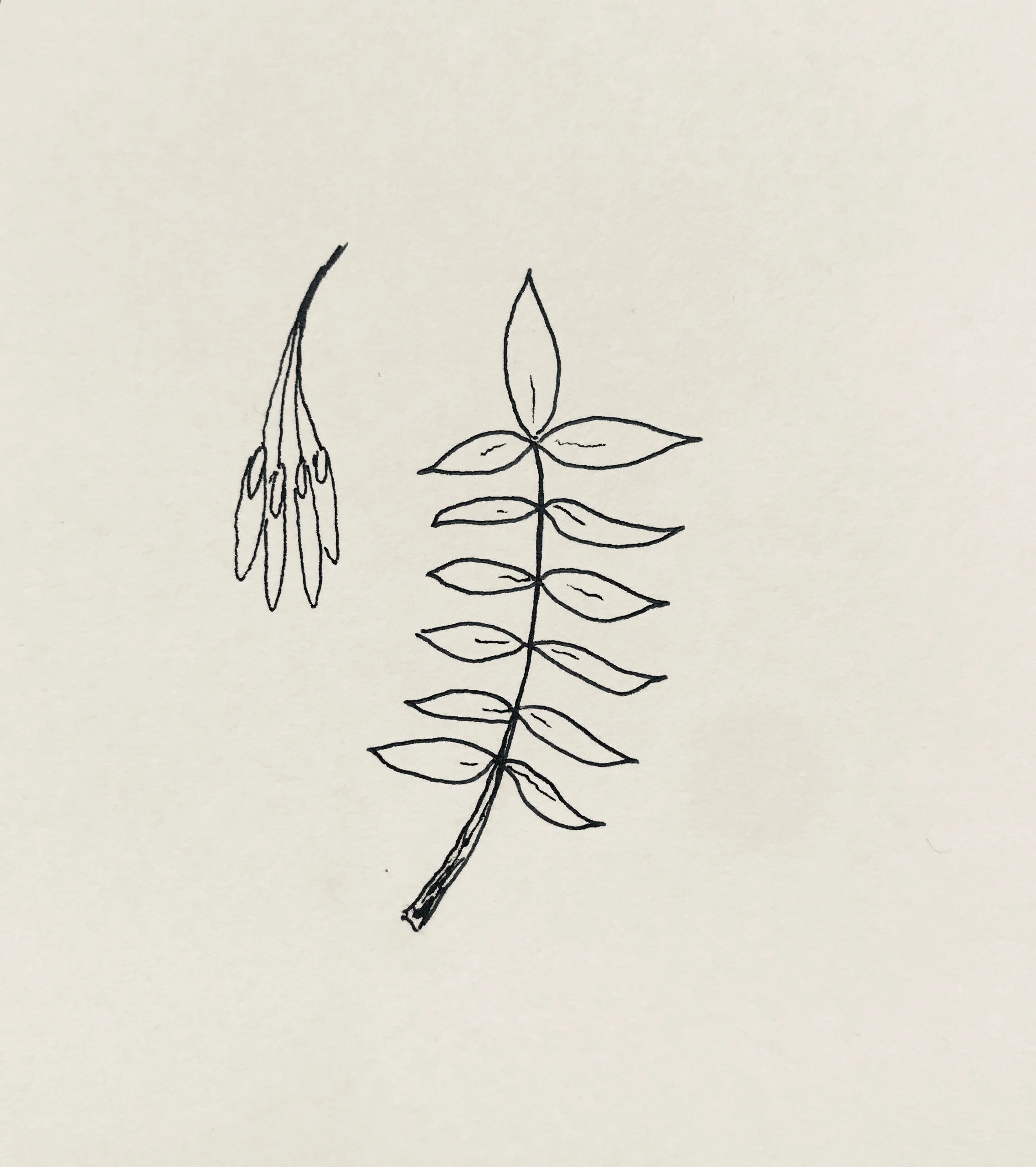Ash
Ash trees line my block with long narrow branches. Everything about the ash is narrow, winding, and multiplying. The ash tree has long compound leaf structures. They are relatives of the olive tree and persist in thirteen species at the moment, growing heartily throughout temperate and mediterranean, and even desert environments. Almost all of these thirteen are in danger as a small beetle known as the emerald ash borer crawls into the tree, and over beetle-generations, the larvae disrupts the transportation of food and nutrients along the trunk.
As the ash grows, often its bark begins to fissure into highways of wrinkles along the trunk, these places provide homes for small animals. As the beetles ravage almost all of the species, The Manna Ash, Narrow Leaf Ash, and Manchurian Ash seem to be the only that have shown resistance. Scientists are attempting to cross these species with the North American Ash types...
Medicinal properties of the white ash: Indigenous practices of the Native American communities who lived with ash trees teach that ash can be used as a tonic for women after childbirth. The seed is an aphrodisiac, and the bark can be made into a tea to reduce fevers.
https://plants.usda.gov/plantguide/pdf/cs_fram2.pdf
The leaves have a dizzying effect against the sky. And every fall each species reveals a particularly vibrant color: turning either entirely yellow, or purple, but always bold.
